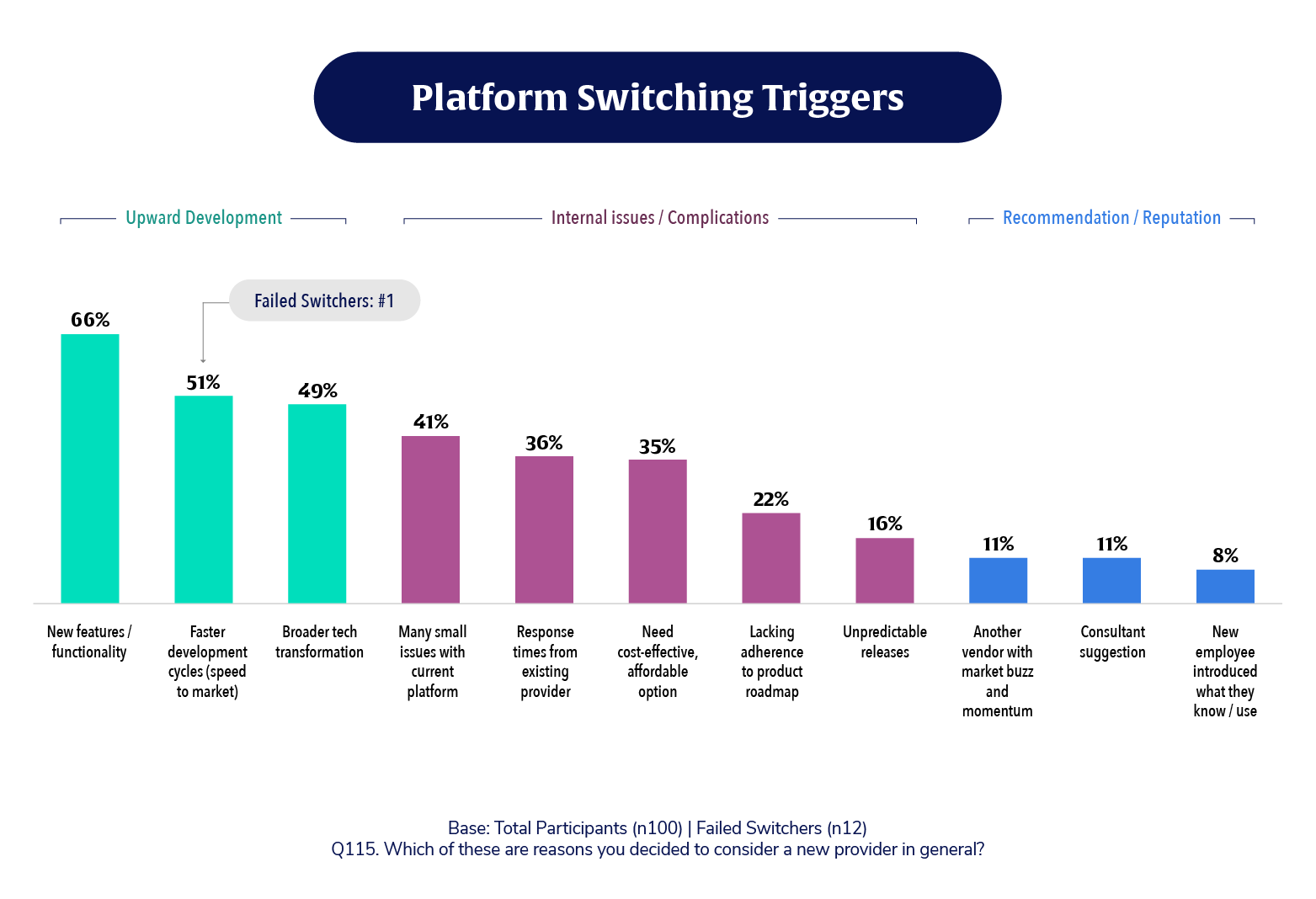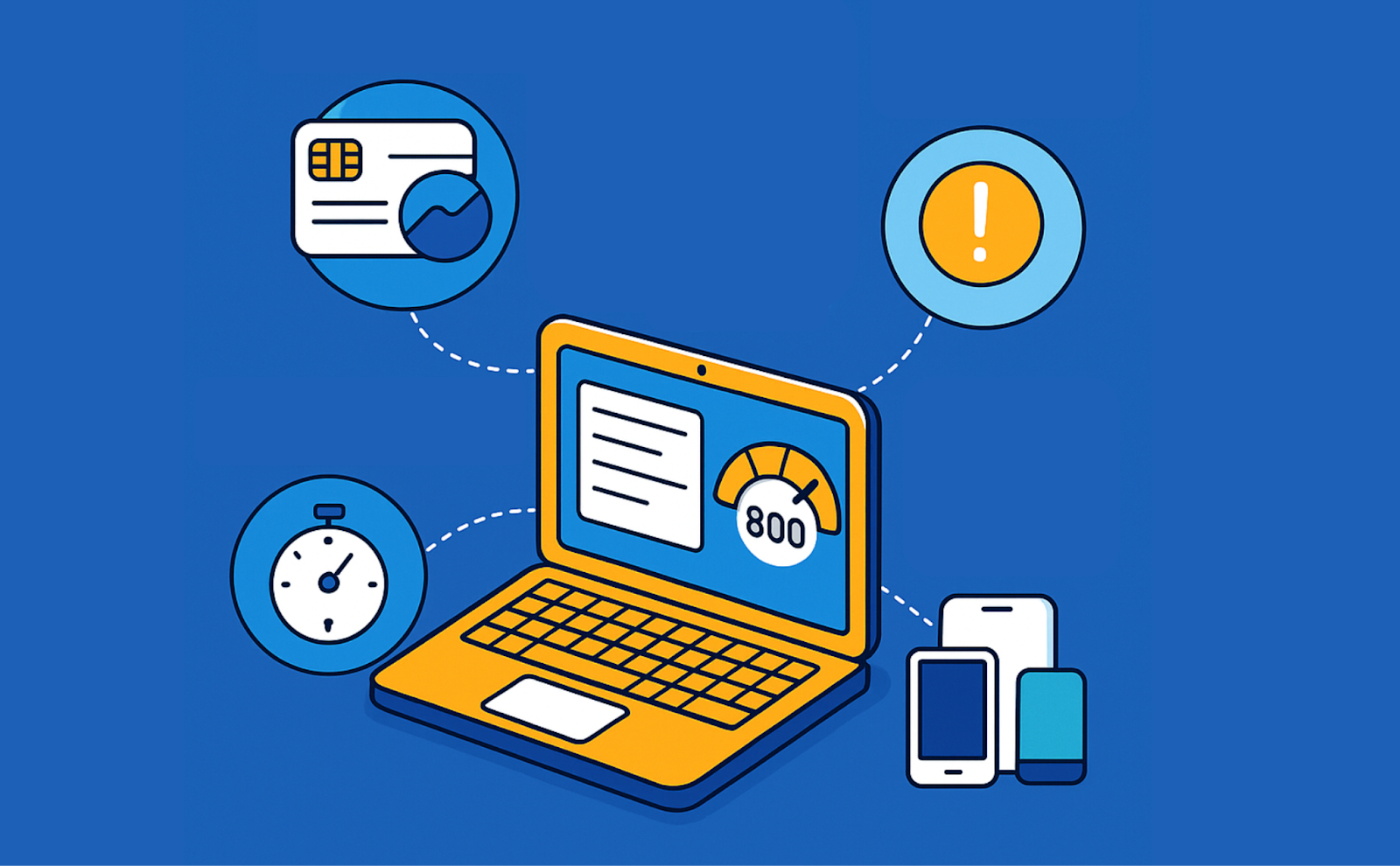What Leading Financial Institutions Do Before RFPs and Demos Begin
Before the Request for Proposal (RFP), before the demos, before the shortlists, there’s the work that is critical to the project: requirements gathering. It’s the phase where financial institutions decide not just what they need from a digital banking platform, but why they need it, and who will be impacted.
Get this right, and every step that follows becomes clearer, faster, and more focused. This phase isn’t about features. It’s about clarity.
The Goal: Understand yourself as an institution: your strategic trajectory, your operational blockers, and what change needs to look like across your organization.
1. Kick-off Discovery: Internal First, External Second
Start with Institutional Self-Reflection
Before you ask a vendor to solve a problem, your team needs to define the problem. Convene a small working group of key stakeholders and ask:
- What are the specific triggers prompting this search?
- Where are we underperforming? Why?
- What internal initiatives (e.g., growth targets, digital expansion, efficiency goals) must this new platform enable?
Don’t rush to solutions. Focus first on patterns, pain points, and possibilities.

Recent research* found that among financial institutions who recently completed a conversion, are currently switching, or failed to convert, the majority of switchers decided to consider new digital banking platform providers when they wanted to evolve their platform and technology offerings vs. addressing issues or problems.
Define Success in Context
Rather than compiling a massive feature wishlist, ask yourselves: What would success look like two years after switching digital banking platforms platforms?
Success could be:
- Cutting new account onboarding time in half
- Reducing call center volume
- Enabling new product launches in weeks, not months
- Expanding business banking functionality
When surveying the market, we found that among financial institutions who had a positive conversion experience, typically measured their digital banking platform success by:
| Account holder satisfaction | 79% |
| Operational efficiency | 71% |
| Revenue growth through digital channel | 52% |
| Cost efficiency | 48% |
| Positive relationships with new provider | 31% |
| Meeting product roadmap deadlines | 25% |
| Senior leadership satisfaction | 21% |
By anchoring in outcomes, you can later assess vendors based on business impact. Not bells and whistles.
Build an Internal Map of Stakeholder Realities
Successful digital banking transformations rarely start in the C-suite alone. Emphasizing the importance to talk to frontline staff, back-office teams, and department leads to gain alignment and uncover:
- Workarounds they’ve created
- Bottlenecks in cross-functional workflows
- Tasks they still do manually because “the system can’t do it right”
These insights inform requirements and surface change management needs you’ll need to plan for later down the road.
Align Early on Risk and Readiness
Oftentimes, risk, compliance, and security leaders aren’t looped in until much later, sometimes at the contract negotiation stage (ouch!) and that’s a mistake. Invite them early to define thresholds for risk, requirements for data retention, encryption, and authentication, and historical gaps with incumbent providers.
This ensures you’re not chasing a platform that looks good but fails in governance review later. Remember, discovery isn’t just about what the vendors can do. It’s about what your institution is trying to solve. Once your team is aligned, you can have much more productive vendor discovery sessions; focused less on features, more on outcomes.
2. Make Initial Demos About Discovery, Not Decisions
Remember, in early-stage vendor demos, the goal isn’t to pick a winner. Your job is to identify which digital banking platforms could be a strong fit for your account holders, employees, and long term goals.
This is your chance to understand the vendor’s way of thinking and:
- How they structure their platform story
- What assumptions they make about your priorities
- Whether they listen well, or simply demo what’s convenient
At this stage, the smartest financial institutions are scanning for long-term fit, not feature parity with their existing digital banking platform. Don’t get distracted by flashy user experience (UX) flows. Instead, focus on the language they use to describe the UX. Make sure it reflects your account holders’ needs. Determine whether innovation is baked in or needs to be bolted on. Lastly, see how the platform enables self-service within administrative platforms; creating opportunities for greater efficiency with back-office teams.
Evaluate the Partner, Not Just the Product
It’s not only about buying software. You’re investing in a relationship that is critical to your institution’s success and growth trajectory. Early demos are often your first look at how the vendor collaborates with their team.
Reflect on the following:
- Do they bring relevant experts to the call or just salespeople?
- Are they transparent about limitations?
- How do they respond when you ask about roadmap items, customizations, or integration complexity?
- Do they understand the industry?
- Are they listening to your financial institution’s specific needs?
These conversations reveal just as much about the partner (and greater organization) as the digital banking platform itself.
Set Expectations With Your Internal Team
Your evaluation team doesn’t need to catch every detail, but they do need clear roles and responsibilities. Before any demo:
- Define who is observing what (UX, admin flexibility, parity across devices, etc.)
- Agree on what kind of feedback is most useful (quick impressions, red flags, potential differentiators)
- Set up a consistent debrief structure and capture reactions with a demo scorecard before memory fades
This makes each demo additive, ensuring early impressions aren’t simply opinions, but clear actionable signals for who advances to the next stage of evaluation.
3. Define the Deal Breakers
At this point, you’re not building the perfect requirements list. You’re identifying your nonstarters.
That means:
- Mapping your existing tech stack and identifying critical dependencies
- Calling out where your current platform falls short so vendors can show how they’d solve it
- Thinking through what your institution needs to do internally to support a potential switch (e.g., staffing, timelines, data readiness)
It’s too early to obsess over platform specs, but perfect timing to articulate your business logic. You don’t need a comprehensive list of requirements. You need to determine your deal-makers and deal-breakers.
⚡Pro tip: Start a running list of open questions for each vendor. Not what they say in the pitch deck, but what they don’t say until you ask.
Map out potential conversations that go a layer deeper:
- What third-party tools and systems will this platform need to integrate with?
- What compliance or security standards does it need to meet now and in the near future?
- Are there gaps in functionality that would require add-ons or workarounds?
Having a clear sense of these early helps avoid surprises in later stages and sets a higher bar for vendor responses.
4. Consider Stakeholder Input Non-Negotiable
Cross-functional stakeholders are the eyes and ears across your institution. To get meaningful input, involve voices from across the organization, including IT & InfoSec, Digital, Operations, and Executive sponsors, and make it easy for them to participate by:
- Giving them a heads-up on what to expect in demos (making sure the expert from your organization is present to ask the right questions in the moment)
- Providing lightweight feedback forms or quick debriefs; structured enough to be useful, but flexible enough to not be a burden
- Showing them how their input will shape the next step
Each group should know what they’re evaluating and how they’ll provide input. Putting the pieces all together, it should ladder back to your institution’s large scale vision. When people know they’re part of a real decision, they engage more and give you the insights you’d never get on your own.
Bottom Line: Clarity Now For A Focused Conversion Journey
Requirements gathering isn’t glamorous, but it’s the most important phase in building a confident, focused conversion journey. When you start with aligned goals, structured input, sharp questions, and clear standards for technical evaluations, you dramatically increase your chances of choosing a digital banking platform that works at launch and well into the future.
*All research insights included in this blog are from Alkami Proprietary Research, where we surveyed 100 digital banking platform decision makers/influencers who recently switched or explored switching platforms. Data collected November 27, 2024 – December 19, 2024.
Looking for resources to help you navigate vendor discovery? Leverage Alkami’s digital banking conversion toolkit.










